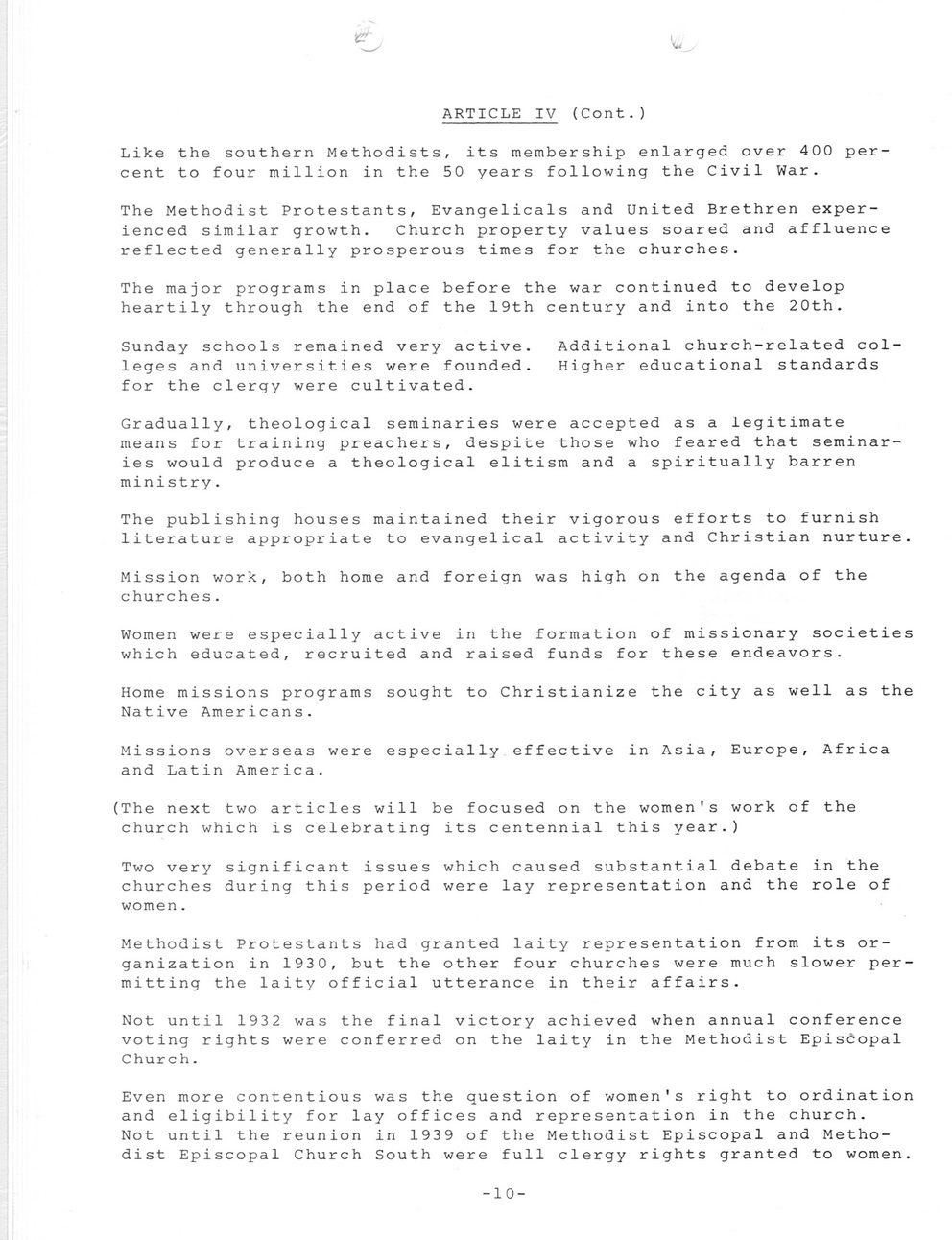This text was obtained via automated optical character recognition.
It has not been edited and may therefore contain several errors.
ARTICLE IV (Cont.) Like the southern Methodists, its membership enlarged over 400 percent to four million in the 50 years following the Civil War. The Methodist Protestants, Evangelicals and United Brethren experienced similar growth. Church property values soared and affluence reflected generally prosperous times for the churches. The major programs in place before the war continued to develop heartily through the end of the 19th century and into the 20th. Sunday schools remained very active. Additional church-related colleges and universities were founded. Higher educational standards for the clergy were cultivated. Gradually, theological seminaries were accepted as a legitimate means for training preachers, despite those who feared that seminaries would produce a theological elitism and a spiritually barren ministry. The publishing houses maintained their vigorous efforts to furnish literature appropriate to evangelical activity and Christian nurture. Mission work, both home and foreign was high on the agenda of the c hurc he s. Women were especially active in the formation of missionary societies which educated, recruited and raised funds for these endeavors. Home missions programs sought to Christianize the city as well as the Native Americans. Missions overseas were especially effective in Asia, Europe, Africa and Latin America. (The next two articles will be focused on the women's work of the church which is celebrating its centennial this year.) Two very significant issues which caused substantial debate in the churches during this period were lay representation and the role of women. Methodist Protestants had granted laity representation from its organization in 1930, but the other four churches were much slower permitting the laity official utterance in their affairs. Not until 1932 was the final victory achieved when annual conference voting rights were conferred on the laity in the Methodist Episcopal C hurc h. Even more contentious was the question of women's right to ordination and eligibility for lay offices and representation in the church. Not until the reunion in 1939 of the Methodist Episcopal and Methodist Episcopal Church South were full clergy rights granted to women.

Main Street Methodist Church Document (022)